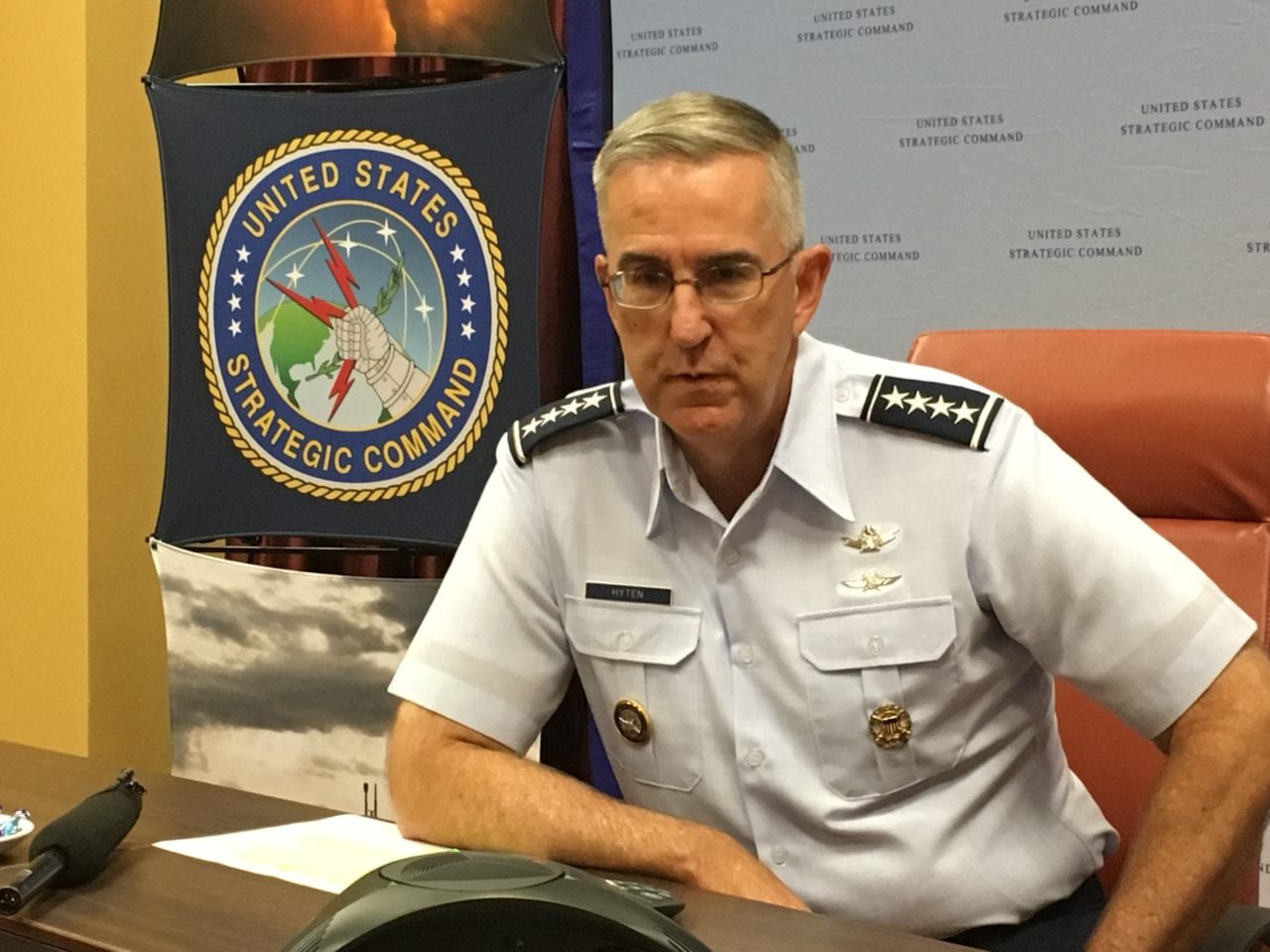
LA VISTA, Neb. — The National Nuclear Security Administration (NNSA) may not be able to produce 80 nuclear-warhead cores a year by 2030, unless it resolves issues this year that have prevented it from converting an unfinished plutonium disposal plant in South Carolina into a weapons facility, the commander of U.S. nuclear forces said here Wednesday.
The semiautonomous Department of Energy agency wants to cancel the Mixed Oxide Fuel Fabrication Facility (MFFF) under construction at the Savannah River Site in South Carolina and convert the massive structure into a factory for plutonium pits: fissile nuclear-warhead cores the size of a grapefruit. The Pentagon needs the NNSA to make 80 pits per year by 2030. The NNSA plans to produce 50 annually at the converted MFFF beginning in 2030, and 30 a year at upgraded plutonium facilities at the Los Alamos National Laboratory in New Mexico starting in 2026.
“We all agree that that plan will work, if it’s executed this year,” Gen. John Hyten, head of U.S. Strategic Command, told reporters here during the STRATCOM 2018 Deterrence Symposium. “[T]he problem is that we’re not executing it.”
Hyten praised the NNSA’s strategy, highlighting the redundancy it would provide for the arsenal: “[T]wo capabilities is always better than one.”
But the nuclear commander added that, from his perspective, the clock is ticking for the NNSA to resolve the political and legal obstacles that have blocked the agency from kick-starting its new plutonium-production facilities. “By about next spring, we have to be on a path to building them,” Hyten said.
South Carolina, its congressional delegation, and MFFF prime contractor CB&I AREVA MOX Services are all fighting the NNSA’s plan to turn the over-budget, behind-schedule plant into a weapons facility.
The state and the contractor have each sued the agency in federal court to keep the plant on track with its original mission of converting weapon-usable plutonium into commercial reactor fuel as part of an arms-control pact with Russia. In June, the judge in the state’s lawsuit agreed to block the NNSA from halting construction for the duration of the suit.
The NNSA appealed that decision, but oral arguments in the appeals court won’t be held until late September.
“The NNSA path forward to recapitalize our plutonium capabilities represents the lowest risk to achieving 80 pits per year. While NNSA does not comment on ongoing litigation, we are reviewing the impacts of legal actions on our current and future national security work in South Carolina,” the agency said in a statement Friday. “Our ability to meet the Department of Defense schedule requirements depends on our two-pronged approach at the Savannah River Site and at Los Alamos.”
The NNSA noted that both the Pentagon and Congress’ fiscal 2019 National Defense Authorization Act (NDAA) have supported the planned approach. “However, bringing this vital national security mission to Savannah River is only possible with the continued support of Congress and the State of South Carolina.”
Congress’ freshly approved NDAA — still waiting on President Donald Trump’s signature — directs the NNSA to continue building the MFFF as planned. As with last year’s NDAA, the bill would allow the secretary of energy to waive the directive by certifying an alternative plutonium-disposal method is cheaper. Energy Secretary Rick Perry submitted just such a certification in May, but Congress is still debating whether to fund construction of the facility.
All those issues “are going to have to be dealt with in the very near future for us to make 2030,” Hyten said.